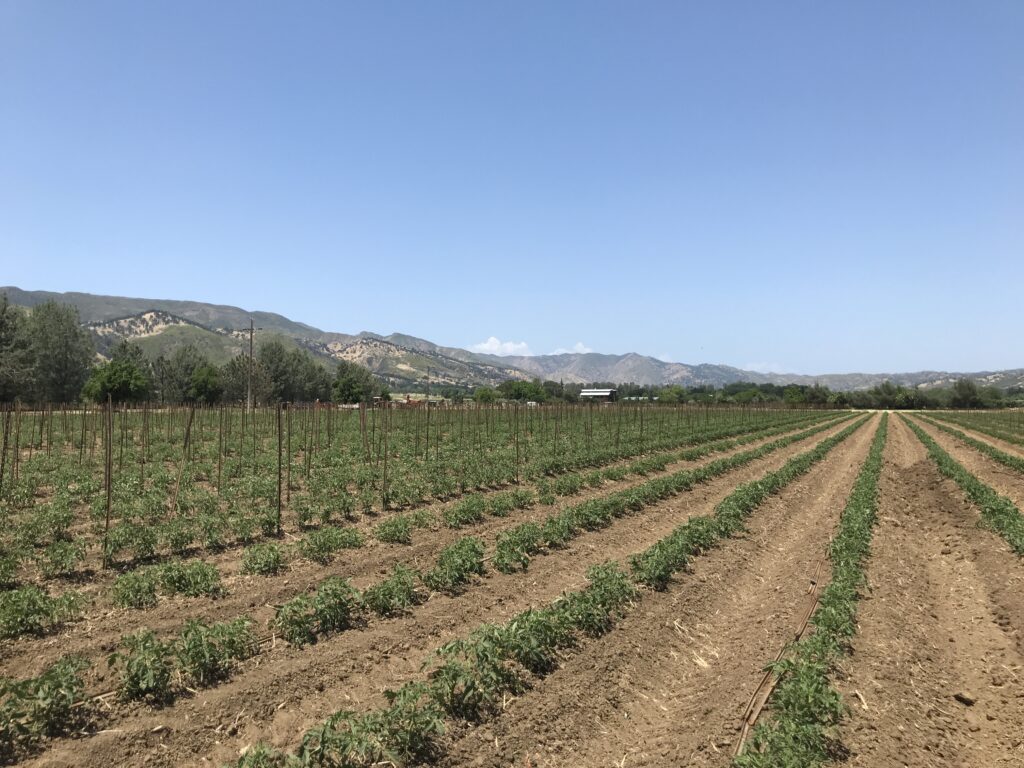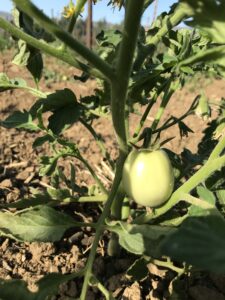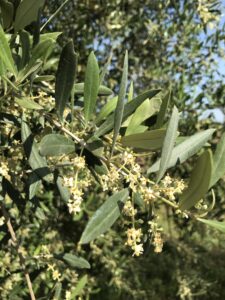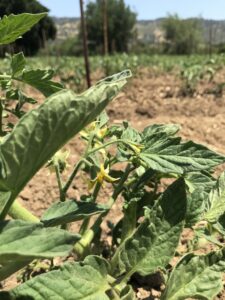
Remember those tomatoes we transplanted a month ago? The work isn’t done once they’ve been transplanted; tomatoes also need to be staked and tied, and we’ve just finished staking both fields of tomatoes. We’ve planted a third field of tomatoes, but those aren’t tall enough yet to stake.
We used to manually pound in all the stakes, but in the last ten years switched to a homemade hydraulic system, using a tractor. The manual stake pounders are really heavy, so it’s hard work, and often resulted in injuries. The new way is slower (one stake at a time, instead of a team of six people) but safer. We manually pound in a few rows of very low stakes (maybe one per row) so that there’s a row that a harvest tractor with 20 inch clearance can drive over, which will speed up our tomato harvest.
As Judith wrote a few years ago about the transition to using the tractor: “Pounding in those stakes was not only hard on muscles and ligaments, it was also hard on ear drums. Letting the tractor do the hard work is quieter, faster and easier on human bodies. The tractor just slides those stakes down into the soil as if it is butter.”
See the video below to get an idea of the staking process and the difference between using a tractor and doing it manually. Just note that most manual staking doesn’t look exactly like this since the posts remain at full height (about 5 feet) once done.
The stakes provide structure and support to the tomato plants. They keep fruit and plants off the ground, which is important for food safety, disease and pest management, and for harvesting efficiency. Tomatoes are vine-like plants and sprawl everywhere if not contained – staked tomatoes are easier to harvest and it’s nearly impossible to navigate rows of tomato plants if they aren’t staked. The many farms in Yolo County that grow canning tomatoes don’t need to stake because they grow determinant tomatoes that have been bred for a very mechanical management and harvest process. Determinant tomato plants tend to have a more compact shape, stop growing when they produce fruit, produce fruit all at once, and die after the fruit has been harvested. We grow a few determinant tomatoes (sauce types, like Roma and San Marzano) but we still usually stake them to keep them off the ground. Indeterminant tomatoes are more vine-like and keep growing over a long season. They can get as tall as 12 feet and produce fruit over a long season, usually only stopping once there’s a frost. Most of what we grow are indeterminant varieties. Staking indeterminant tomatoes, especially on a farm scale, is necessary, it’s not an option!
Next comes tying – to be featured in a future week.
Other sights from the past week include baby fruits (tomatoes and grapes) and flowers (olives, tomatoes, and our first sunflowers!):





– Elaine Swiedler, CSA Manager
